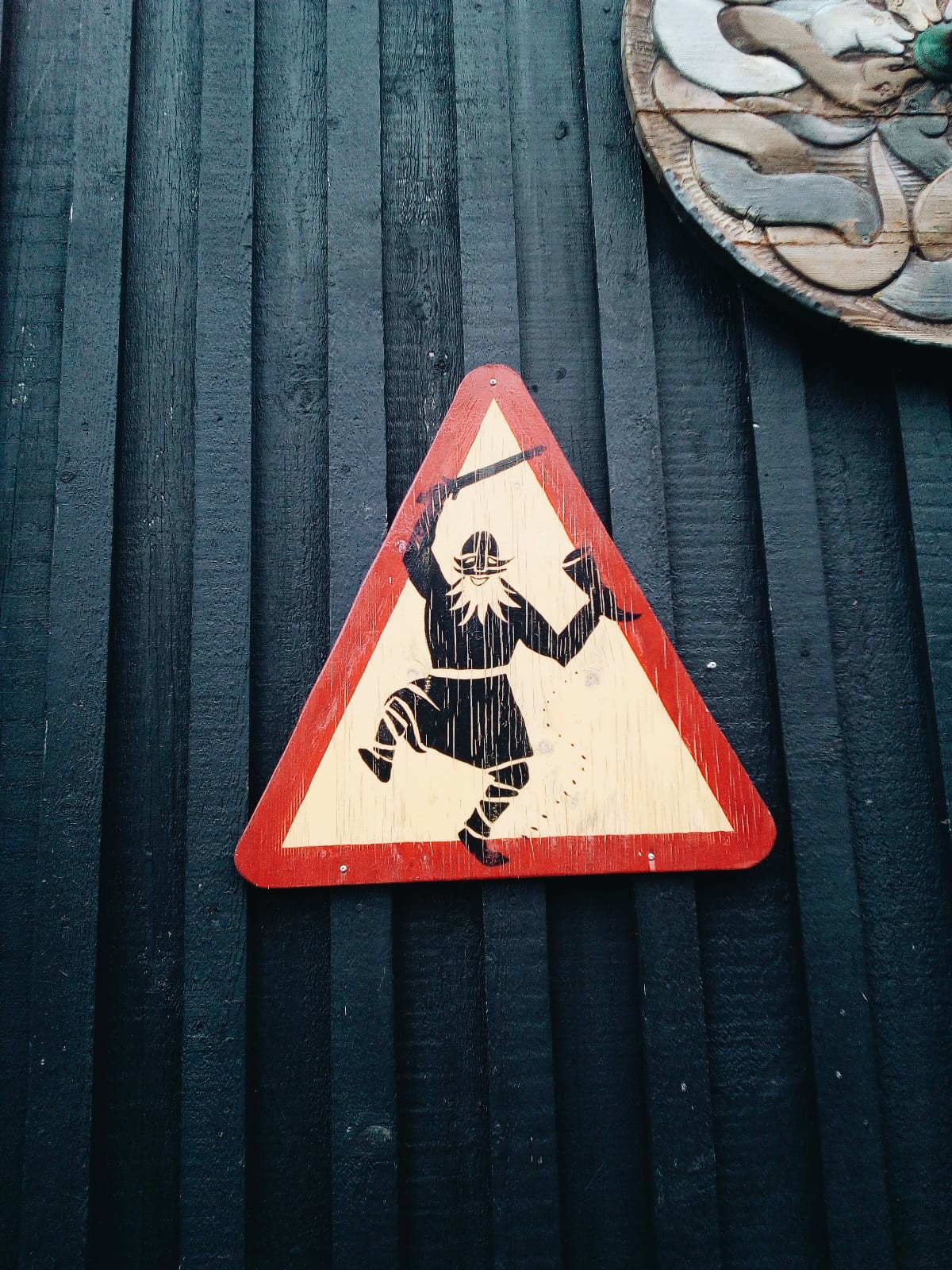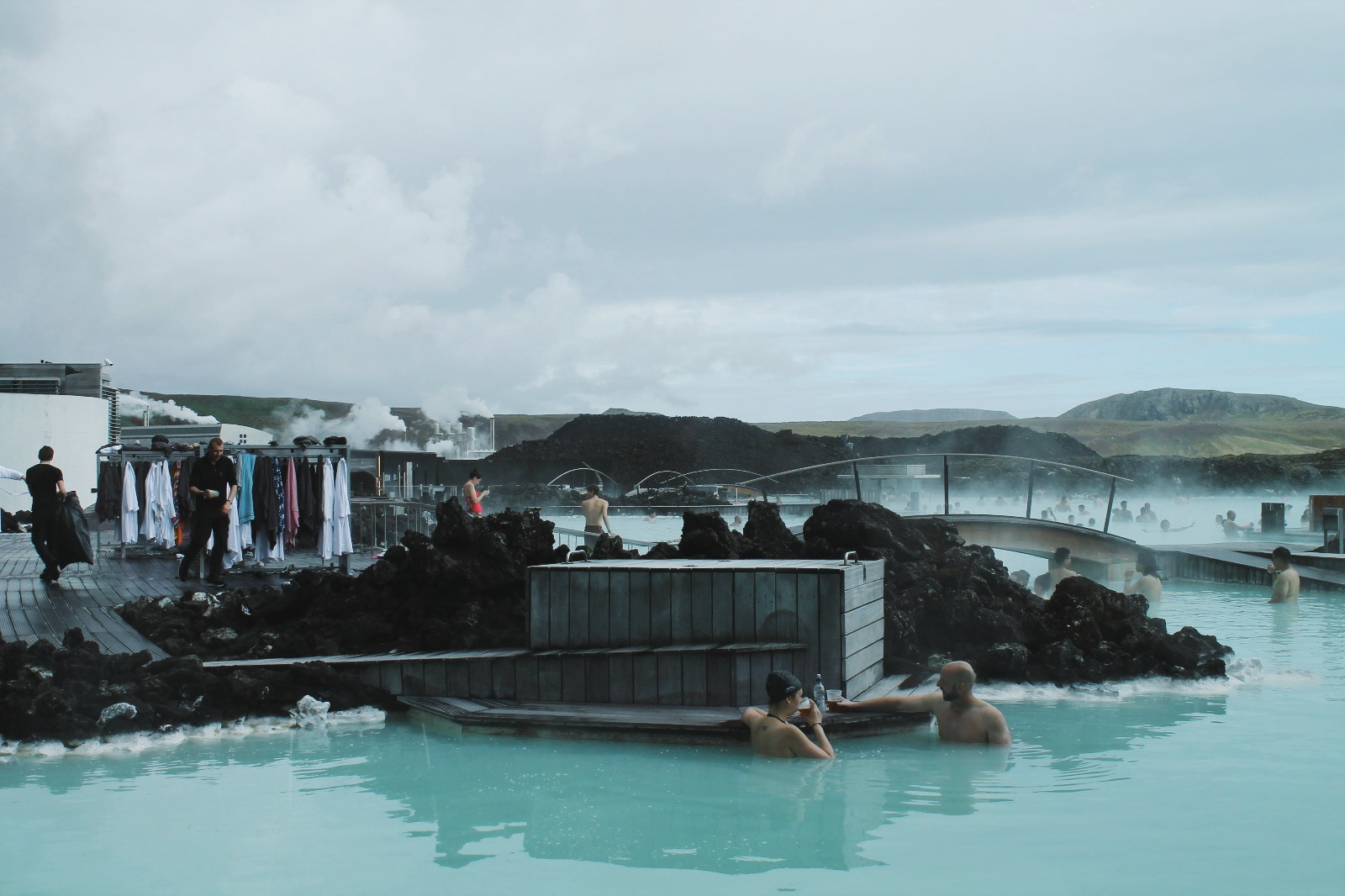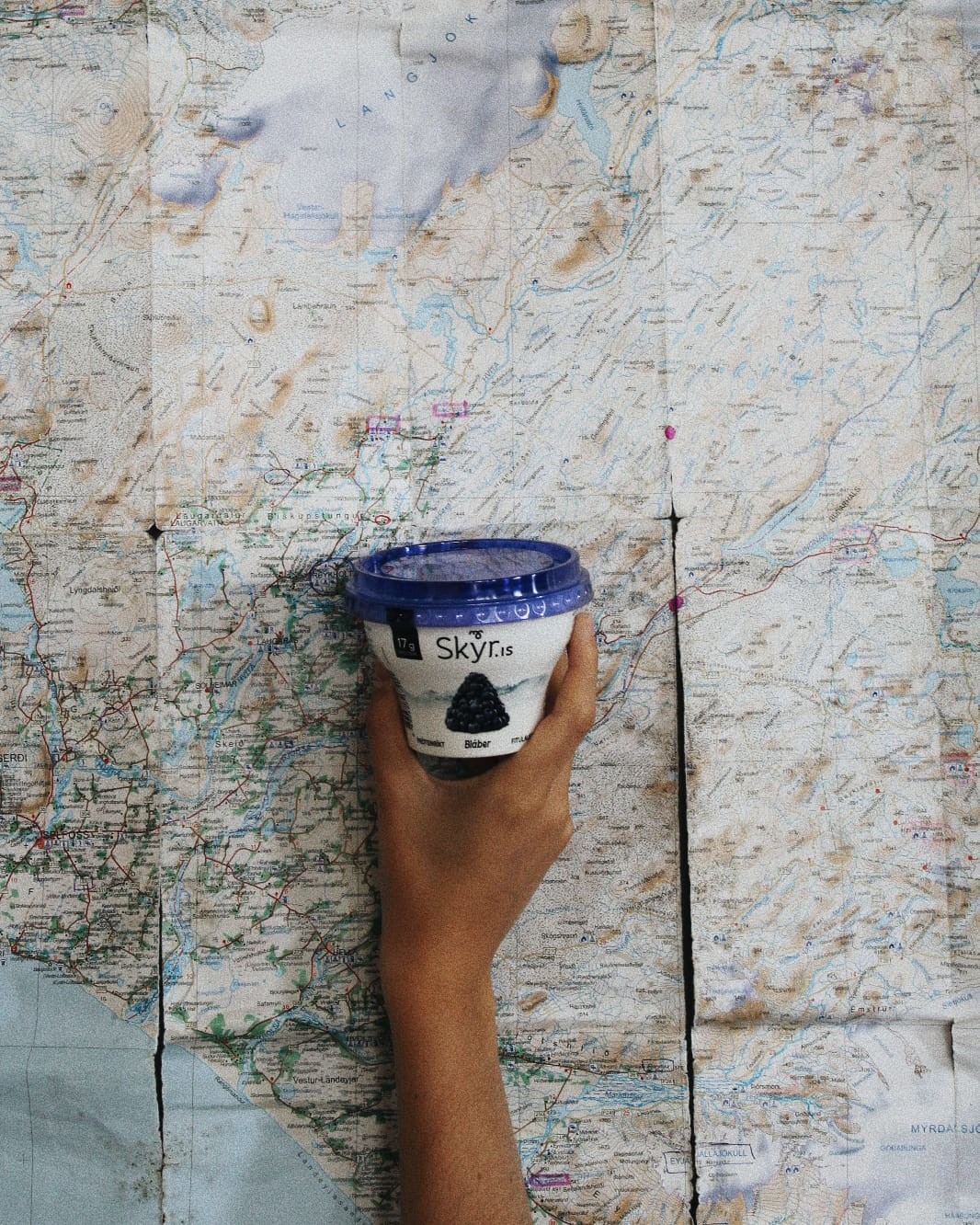10 tips for travelling to Iceland
Hello again! Today, we're continuing on with the posts about Iceland. After the extensive post from yesterday where I talked to you about the 20 must-see places in Iceland, today I am going to give you some tips which I think you should bear in mind if you are planning a trip to the land of the Vikings.
Until a couple of years ago, travelling to Iceland seemed a very difficult and expensive thing to do. Now, like all of the other destinations, Iceland has become a bit more accessible for some. It's true that it is still very expensive, but it's not as restrictive as it was before, so keep reading to know every detail on how to travel to Iceland.

1. Flights to travel to Iceland
As usual, I'd recommend that you buy them in advance. We bought ours 2 months in advance and they cost us 200 euros return, which bearing in mind the distance we were travelling, the price wasn't awful. We travelled from Santiago de Compostela to London. We were in the airport in London for no more or less than 9 hours. Finally, we got a flight to Keflavík International Airport, and from there we took a coach to get to Reyjkavik, or wherever your first destination would be. We travelled with WoWAir from London to Iceland, and we were pleased with the company. So, if you travel to Iceland from UK, that's even better! We arrived in Iceland in the evening, at about 11 pm, but as we had gone at the beginning of June, it was daytime, so it doesn't get dark at any point of the day.

2. Moving around: public transport in Iceland
It wasn't one of the best things about Iceland, not by far. Simply because for the daily life there, they don't need it. However, to get around this big island, you definitely need to rent a car. Renting a car is usually expensive, and after accommodation, this is going to be what you spend the most money on. The usual question is whether you need a 4 by 4 or not, which depends on your journey. This is why I would tell you you don't need one, because the roads are well-paved and there's no need to go on virgin ground in order to access the different natural marvels that Iceland offers. If you are a group of 5, a car will be a lot cheaper for you. Generally, we found that the travellers were in a couple or in a group of three people at most. This depends on you, but I think that going around Iceland gets more complicated if you are part of a big group. The roads are long, lots of hours in the car, the organising for eating and all the other things you have to plan... and with every person, there comes more opinions and a lot more chance that there will be some arguments.
3. Moving around, renting a car or hitchhiking?
Hitchhiking isn't something that I'd do without a second thought, but Iceland is one of the safest countries in Europe, so the possibility of something bad happening is really minimal. It is very common to drive along the street and find travellers with a sign around their neck with the destination they want to go written on it. If you take them and bring them with you, fair enough. And if not, they will travel by foot. We picked up two boys who were from the Czech Republic, we asked them where they were going and they just wanted us to take them to the campsite where they were staying. They were really nice.
4. Camping in Iceland
We were lucky enough to have slept every day in a house near to Reykjavik, and every day we took the car and travelled towards the city. There were travellers that wanted to travel around all of the island and so they rented houses here for where they wanted to go. Some friends, instead of renting a house every day, they alternated in order to save money, so they had a day camping and the following night sleeping in a bed. There's another idea. You're not allowed to do the following one, but I know that a lot of people do it, and that is to sleep in the car. They rent a big car and in the back bit they put up a bed and spend the night there. This is illegal because the weather in Iceland is very unpredictable, and in certain areas and times of the year, there are snowstorms and you run the risk of ending up trapped.

5. Bring different kinds of clothes
If you go there at the end of spring or in summer, don't expect it to be hot. I bought thermal clothes with me as in certain places it was really cold, and the wind made it even colder. Only in calmer areas, further away from the coast, was I able to take off my winter jacket and put on my big jumper. What I did was put on layers and layers of clothes. It's the only way to survive the cold. Of course, umbrellas are useless, nobody uses them here. Bring raincoats. In addition to this, you have to bring a bikini or swimming costume if you want to swim in the Blue Lagoon or in any of the famous geothermal baths. You can read about these places in the other post that I published beforehand. In conclusion, bring different types of clothes with you and don't trust the weather forecast, because the weather is really unpredictable and what the Icelandic people consider "warm" could feel like 5 degrees to you.

6. Plan your itinerary to travel to Iceland properly
Talk to people who have visited Iceland before, read different blogs, forums; watch videos on Youtube to get an idea of the actual size of the waterfalls and above everything, look at the map. Look at Google Maps and think carefully about how much time you need in order to visit a place and to travel to the other ones. Think about how you are going to get there, your pace and your interests. It might seem like you can visit the three most famous waterfalls in Iceland quickly. It is something that, at first glance, can seem like it won't take long but this couldn't be further from the reality. You have to park your car quite far away from each waterfall, and then walk to where they are, and it is a decent walk. Between getting there, walking, exploring, taking photos; if you take your time, you can easily spend two hours there. And we're not even talking about if you include a stop to eat or if you want to do a hiking trail and discover some new places. You can't visit the places in Iceland quickly, or at least, in my opinion, not if you really want to enjoy them.

7. When to travel to Iceland? Choose the time of the year wisely
Without a doubt, the best time to travel to Iceland is during summer, but it's up to you! I visited Iceland when there was 24 hours of light a day, This might sound crazy, and at first it was. It was a really weird feeling for me, but in the end you make the most of it because you have so much more time to visit what you want to see; though finally this only ends up turning in to one thing: exhaustion This would be the advantage of going in summer and the "good" weather. If you go there in the winter, it is a complete adventure. In the night you will be able to see the Northern Lights, but the weather is colder, more unpredictable, dangerous and therefore can make your trip quite difficult. Saying that, accommodation is quite a lot cheaper in the winter because it is their low-season. It's a question of your priorities - how much of an adventurer you are and what appeals to you the most.
8. In terms of food, a lot of people bring it with them from their home country
As I told you, Iceland is an expensive country and I know friends who brought a suitcase full of food with them in order to save money. In addition to normal food, which is usually non-perishable, they bought lfreeze-driedl meals with them. This food is designed for adventurers or travellers who are going to be in nature, far from any civilisation for a long period of time. Such as mountain-climbers in the mountains. lIt is very convenient as it is light, easy to prepare and you won't lack any nutrients. l It comes in perfectly square packages and you just have to put it in hot water to be able to eat it. Wait a few minutes and voila. Easy and convenient. It all depends on your budget, obviously. Anyway, this isn't about eating in a restaurant, but you can also buy food in supermarkets you come across and bring it with you every day. We always bought our food in the supermarket BONUS, as they say it is the cheapest one. In addition, it's a way of trying food and products that are typical to Iceland, like the famous skyr yoghurt. It has slowly and slowly become more famous, and common, because it is really healthy, there are lots of different flavours and it contains a lot of protein. In fact, a year after having travelled to Iceland, I found an imitation of this yoghurt in Spanish supermarkets. They sell it to you as an Icelandic yoghurt, with the same nutritional values, but it's actually a more standard yoghurt, and it isn't worth spending money on it because there are other cheaper alternatives. Saying this, I'm looking forward to the day when they sell the real skyr yoghurt in Spain.

9. Exchanging money in Iceland
We paid for everything with our debit/credit cards, so you don't have to change up huge amounts of money. Saying that, change a little bit up to be prepared, but in general, they are used to tourists and travellers there - so there won't be a problem using your card to pay for things for the whole of the trip.
10. Explore Iceland as much as possible
Normally, people travel to Iceland in order to see the nature. And this is normal, because it is incredible. For us, in addition to doing this, we also had a few days where we visited small villages such as Hafnarfjordur where we did normal things: walked through the village, had a coffee, and so we experienced the non-touristic part of the country. Obviously, if you go to Iceland on a tight schedule you won't do that, but it really is something that I'd recommend. That day we also explored the surrounding areas of Hafnarfjordur and walked through the woods, we saw beautiful flowers and took photos like these, which are my favourite from the whole trip. We also were with some horses and we gave them some carrots to eat. Another day we also did a typical Iceland pastime, which is to spend the evening at the geothermal baths. It was absolutely freezing and we were running from the changing rooms to the pools, where the water was 37 degrees Celsius (some of them were even 40). All the Icelandic people saw us running and laughed. They didn't understand why we were running. Obviously they were used to the cold, but we were freezing and needed to get into the water as soon as possible. That day we ended up being more shrivelled than a raisin because of how long we spend in the hot water.

And these are my 10 top tips for travelling in Iceland! I hope that you enjoyed reading them and that they will come in handy. If you have a question, leave it down below in the comments or send me it on private message. Remember that I have another post about Iceland, where I tell you about the 20 must-see places there. Goodbye, and I'll see you in the next post. Thank you for reading.
Photo gallery
Content available in other languages
- Español: 10 consejos para viajar a Islandia
- Français: 10 conseils pour voyager en Islande
- Italiano: I miei 10 consigli per un viaggio in Islanda
- Português: 10 dicas para uma viagem à Islândia
Want to have your own Erasmus blog?
If you are experiencing living abroad, you're an avid traveller or want to promote the city where you live... create your own blog and share your adventures!
I want to create my Erasmus blog! →










Comments (0 comments)